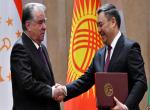Introduction
Military drones have become an indispensable tool in modern warfare, and stand poised to shape the contours of all future wars. Use of drones in warfare is not new, they were used in Vietnam, in the Kosovo war, Afghanistan, Iraq, and, most recently, in the Armenia and Azerbaijan conflict in Nagorno Karabakh and in Russia-Ukraine war. The 2020 Nagorno-Karabakh conflict conclusively established the importance of drones in a conventional battlefield. In the first few hours of the war, Azerbaijani drones destroyed nearly 50 per cent of Armenian Air Defence (AD) systems and nearly 40 per cent of its artillery. After establishing control of the airspace, the Azerbaijani UAVs targeted Armenian ground forces with impunity [1]. The Russia–Ukraine War too has witnessed a significant surge in the use of drones for surveillance as well as strikes. The ability of the Ukrainian military to innovate to offset greater enemy firepower is an important lesson for students of warfare. The unmanned systems have also transcended the aerial domain and have witnessed operational employment in marine and land warfare. The way in which Russian and Ukrainian forces have exploited AI to enhance operational capabilities of the drones has taken drone warfare to a new level.
The Russia–Ukraine War has also brought to fore a different dimension of drones. There is a surge of small, inexpensive, off-the-shelf and even recreational drones in the battlefield, in all three domains—land, sea and air. The First Person View (FPV) drones, made out of inexpensive commercial drones, having capabilities and characteristics of loitering munitions, have enabled remote pilots to hit fast moving targets with precision at ranges upto 12 Kms [2].
Fifth and fourth generation aircrafts and long range missiles cost millions of currency and very few countries can afford these platforms in significant numbers. In comparison, drones are inexpensive and expendable, yet an extremely potent tool of warfare. They can perform a wide variety of tasks, from ISR, to directing artillery fire, chemical, biological, radiological, and nuclear (CBRN) operational tasks, and many more. In addition, the unmanned systems have an advantage of providing persistent presence and reducing risk to the crew. Use of small drones as scouts, loitering grenades, drone bomblets, and suicide drones has made drones as useful as individual soldiers and is rapidly changing previously held perceptions that drones are merely agents for remote warfare.
Given the operational and tactical advantage accrued by use of drone technologies, our Armed forces too need to prepare a roadmap for induction of drones and suitably modify doctrines and processes for optimal employment in conventional as well as sub conventional operations.
Changing Contours of Drone Warfare
The Russia Ukraine war has unequivocally established the vital role of drones, especially small drones, in modern warfare. Dubbed as the “first full-scale drone war,” the Russia-Ukraine War marks an inflection point where states are testing and fielding drones on an increasingly networked battlefield. The exponential “dronization” of the battlefield, already noticeable in Syria and during the war in Nagorno-Karabakh, has now assumed significant proportions. The war in Ukraine represents an acceleration of the integration of this technology into conventional military operations, with unpredictable and potentially game changing effects. The use, of militarized and inexpensive civilian drones in the Russia Ukraine conflict, on a broader spectrum of operations, is one of the highlights of the evolving nature of drone warfare. Some aspects are given below:-
- Extensive Employment: Never before have so many drones been used in a military confrontation as they have been in the Ukraine Russia war. The Royal United Services Institute estimates that Ukraine is losing nearly 10,000 drones per month, giving an indication of how many are in use. Individuals have donated many drones and crowd funding efforts by the public have also allegedly led to the acquisition of thousands of drones. With the massive arrival of these small and light drones in the military field, the techno-capability mismatch between Russia and Ukraine has been bridged to a large extent.
- Wide Variety: These range from the very small – such as the Black Hornet which has a wingspan of only 12 centimetres – to drones with wingspans of over 15 meters. The Black Hornet is a nano class of drone that weighs a mere 70 gms and costs around 19000 US dollars. Operational in militaries of several nations including the US, its main value is for close range reconnaissance as it can scout out the interior of buildings or look into trenches or other positions as close as 20 m from the target without getting detected [3]. Small systems have played an important role in Ukraine war as well. Quadcopters and other rotor drones are mainly produced by commercial firms such as the Chinese DJI and are among the most common. Armed systems, such as the Turkish-made Bayraktar TB2, or on the Russian side, the Orion drone, carry missiles which can be used to attack troops on the ground. So-called kamikaze drones, or loitering munition, single-use drones, which hover above a target before diving into it and exploding with it, are also being used extensively, as witnessed in the recent attacks on Moscow.
- Wide Employment Spectrum
- Surveillance and Intelligence Gathering: Surveillance and reconnaissance are the most common uses of drones. All drones carry photo, video, or other data collection sensors, which allow forces to locate enemy bases, observe troop movements, and choose targets. A surveillance drone in a single sortie is able to generate several thousand photographs, which on analysis assist in firming up on a target, which helps in avoiding a confirmatory recce and avoids wasteful expenditure of artillery ammunition. With precise coordinates of targets known and passed on the Starlinks system, Ukrainian forces were successful in obtaining a direct hit on a target using just three rounds of US supplied M777 howitzer [4]. Other weapon systems such as the Excalibur GPS-guided artillery shells and the US HIMARS rocket systems when guided by UAVs have been reported to become even more potent in neutralising targets.
- Psychological and Propaganda Warfare: The constant threat of drones profoundly effects the morale of troops by creating a climate of terror. Closely linked to surveillance is the ability of drones to document attacks, which can also provide useful material for propaganda purposes. Drones have documented the destruction of cities by Russian forces, the flooding of Ukrainian territory following the Kakhovka dam breach, and attacks against Russian ships, tanks, troops, and materiel which is used to build narratives for strategic communication and propaganda warfare that have potential for vast disinformation campaigns capable of winning the battle of perceptions. In the recent, drone attacks on Moscow, while so far, no one has been killed in the attacks and the destruction appears minimal, but it has created embarrassment for the Russian military that they are unable to protect the capital.
- Strikes: Drones are used to help direct and conduct strikes. At the beginning of the war, Ukrainian forces used armed military drones such as the TB2 to target the Russian convoy headed for Kyiv. A TB2 drone may also have been used to distract the defences of the Russian flagship Moskva while naval missiles attacked and ultimately sank it. Intelligence gathered by drones is also used to direct artillery and conduct other strikes.
- Militarized Civilian Drones–Weapons for Techno-Guerrilla Warfare: The Russia Ukraine conflict has also witnessed use of low-cost civilian drones to boost guerrilla warfare tactics. Innovations such as grenades fixed on commercial drones and the use of 3D printers to add anti-tank bombs on octocopter drones has significantly increased capabilities of militaries to execute guerrilla warfare, as such innovative use of drones has proved capable of effectively threatening infantry units and logistics lines. The Aerorozvidka unit of Ukraine is probably an apt example of the integration of military and civilian technologies. Aerorozvidka is a unit that promotes creating and implementing netcentric and robotic military capabilities for the Ukrainian security and defence forces. It conducts ambitious air-land operations as part of the techno-guerrilla warfare tactics of Ukraine. The Aerorozvidka unit relies on NATO enabled intelligence inputs, uses irregular air forces and budget-effective technology to map enemy movements in real-time [5].
- Naval Drones: The term “drone” doesn’t necessarily refer to airborne systems. Maritime drones – both surface vessels and submarine systems – exist, as well as ground based drones (though many call them robots rather than drones). Before the Russia Ukraine conflict, however, only airborne systems were used extensively in military operations. This is starting to change - Drone boats are now in use, most notably in the attack on Russia’s Black Sea Fleet in Sevastopol. More recently, Ukrainian forces damaged a Russian amphibious landing ship and struck a Russian fuel tanker using naval drones. On 17 July 2023, Ukrainian Unmanned Surface Vehicles (USVs) successfully targeted the Kerch Bridge, linking Crimean Peninsula to mainland Russia [6]. War-time destruction of bridges, especially at the time of own choosing has always been a difficult operation. Employment of UAVs and USVs perhaps may provide an answer to this key military operation.
- Hybrid Warfare Capabilities and lack of Accountability: As AI and autonomous capabilities continue to reduce human involvement in targetting, drone warfare will most likely become less explainable and transparent than it is now and will enhance hybrid warfare capabilities, especially of non-state actors. The problem of explainability will foster a lack of accountability in the coming drone warfare era. When civilians are mistakenly killed in AI-enabled drone strikes, organisations will be able to blame machines for these “tragic mistakes.” As drones begin to talk to each other as well as to humans, the accountability and legitimacy gap between the human decision to kill and the machines performing the lethal act is likely to grow.
Innovation in Drone Design and Development
The design principles behind the success of the drones revolve around several factors including the production cost, airframe material, weight, payload, range, deployment and ease of use. Other considerations include the reliability of the operating software and the ability to fly the drone in various weather conditions. Some recent trends are given below:-
- Card Board Drones: Recent use of low-cost cardboard ‘Corvo’ drones by Ukraine, supplied by Australia, to attack targets in Russia is a good example of innovative design of drones. The cardboard drones can carry 5kg of weight, have a wingspan of two metres and a range of 120km at a reported cost of US$3,500. Waxed cardboard is an ideal material as it offers weather resistance, flat-pack transportation (measuring 510mm by 760mm) and, importantly, a lightweight airframe, which enables a longer flight range and a high cruise speed of 60km/h [7]. Built by cardboard, the Corvo drone has a small signature and if coated with Radar-absorbing materials could possess significant stealth properties.
- Swarming Capability of Drones: Another design aspect is the swarming capability of the drone. Swarms of drones can overpower air defence systems through sheer volume and or can be used as decoys in counterintelligence operations. Swarms are highly reliant on the development of artificial intelligence, which is still a nascent research area. Recent display of drone swarms in various shows and events (Beating the Retreat, Jan 2023) have highlighted their immense potential. They have even evoked fear of being used as weapons of mass destruction.
- AI Enabled Drones: Drones with autonomous capabilities and AI-enabled munitions are already being used on the battlefield, notably in the Russia-Ukraine War. From “killer algorithms” that select targets based on certain characteristics to autonomous drone swarms, the future of warfare looks increasingly ominous.
- First Person View Drones: The internet is full of video clips showing drones chasing soldiers and then exploding in close proximity. Such a weapon did not exist in its current form at the outset of the Ukraine war, but has now become a preferred weapon on the front lines, It is the first-person view (FPV) drone. Derived from racing quadcopters, these are guided to their target by a pilot on the ground who watches a video feed through goggles. The appeal of FPV drones is that they offer cheap, accurate firepower. Unguided artillery shells cost anywhere between $800 and $9,000, a GPS-guided shell is close to $100,000 while a simple FPV drone costs merely $400 [8]. As per recent reports Ukrainian assault groups of 12 to 16 soldiers are accompanied by almost the same number of drone operators, and most of them are FPV pilots. FPV drones have helped Ukraine augment conventional firepower and close the firepower gap with Russia which in conventional ammunition is three times more.
Cost Effectiveness of Drones
Investing in military drones has significant economic implications for a nation’s defence budget and overall military spending. The cost effectiveness of drones is a key factor in this regard. Drones are generally cheaper to acquire and operate than manned aircraft, making them a cost-effective solution for certain military operations. The expenses associated with unmanned aerial systems range from few thousands of dollars to millions, depending upon the sophistication and capabilities of the drone. Advanced drones equipped with state-of-the-art surveillance systems and weapons are more expensive but still less than operating cost of manned aircrafts.
Comparing in the most simplistic manner, the MQ-9 Reaper drone of US has a single unit cost of approx. US $ 100 million, an operational cost of close to US$3 million and approx. US$3250 per hour of flight time, while in contrast, the F-35 Joint Strike Fighter costs nearly US$ 177 million per unit, almost US$5 million per year to operate and $16,500 per hour of flight[9]. Approx. cost of some types of military drones is given in the table below:-
Drones also can inflict heavy economic cost on the defender for protection of airspace. The approx. cost of a man portable air defence missile system (MANPADS) is around 100-150 thousand dollars. Given the low price of a civilian drone, complete airspace protection would quickly reduce surface-to-air missile stocks and create an unsustainable cost for adversaries to defend airspace. Thus, large scale use of drones in military confrontation is likely to tilt the economic balance in favour of the adversary on the offensive. This makes offensive use of drones is an important consideration in evolving drone warfare.
While drones will never completely replace manned platforms, there is a definite need to optimally harness their immense potential to augment manned platform capabilities, reduce exposure of troops in high risk operations and use them as force multipliers.
Drone Capabilities for Our Armed Forces
Indian Armed Forces operate in trying terrain and weather conditions all along our borders – from deserts to high mountains to riverine to jungle terrain including large maritime region and airspace. Unresolved border issues with our adversaries makes continuous and gap free surveillance and monitoring of our borders an imperative, which is resource intensive in terms of equipment as well as troop deployment. Keeping in view the versatility of drones and the wide spectrum of operational commitment of our Armed Forces, large scale employment of drones in terms of range and depth is a necessity.
While role of medium and large drones is extremely important to augment conventional capabilities in ISR, directing artillery fire, post-strike damage assessment and direct strikes, role of small, mini and micro drones to gain advantage over adversary in various tactical situations cannot undermined. Besides surveillance and monitoring of our borders, drones will be of immense value to forces carrying out counter insurgency/counter terrorist operations. Here, mini and micro drones could be used to discreetly pin point location of insurgents facilitating their neutralisation. Even armed FPV drones could be used to target insurgents in potentially dangerous/high risk situations. Drones would be equally beneficial in logistics support role in remote/ inhospitable terrain to augment delivery of supplies and lifesaving medicines. They could also find value in search and rescue operations especially in avalanche prone areas.
Our Armed Forces have given an overview to the industry of our drone/UAV requirement that is envisaged to be inducted into the Indian Armed Forces upto the late 2020s in the Technology Perspective and Capability Roadmap – 2018 (TPCR- 2018) document. However, in the last few years, the way drone technology has matured and innovative use of these platforms has boosted military capabilities world over, calls for a multi-pronged approach to fast track induction of drones in our Armed Forces in the desired quantity and range. Some recommendations are given below: -
- Monitor Technological Innovations of Drones in Private Sector: Military operations in Ukraine have amply demonstrated the role of low cost commercially available drones for military use. Since most scientific developments regarding the miniaturization of drones are outside the defence industry, the private sector ecosystem is a hotbed of innovation that can benefit the military. Therefore, a constant technological watch is necessary to stay informed of drone developments in private sector that can be readily inducted in our Armed Forces with suitable modifications/innovations. The private sector drone industry could hold the key for integration of large numbers of micro/mini drones into our concepts of operations.
- Prepare a Holistic Roadmap: Armed Forces must prepare a definite road map, not only for induction of drone platforms but for rapid adaptation of our Armed Forces to this new strategic reality. We need to modify/review our tactics, techniques and processes (TTPs) and modify our warfighting concepts/doctrines duly aligned with the capabilities of drones that are likely to be inducted. Also suitable organisation structures need to be created /modified. Mass induction of micro/mini drones for tactical advantage could necessitate creating a sub unit at company/ Battalion level in infantry units, and drone units/control stations at the level of Brigades/Divisions to augment ISR capabilities. Further, training aspects such as training of pilots for flying drones, manning of ground control stations, networking aspects etc, must be factored in the roadmap. Large scale proliferation of drones in battle battlefield will also create challenges with respect to Air Space Management for which existing operating procedures will have to be altered taking into account renewed priorities for usage of airspace.
- Military-Industry-Academia Collaboration: The country has several premier institutions such as the Defence Research and Development Organisation (DRDO) and the Indian Institutes of Technology (IITs), which have been instrumental in developing indigenous technologies for defence equipment. A lot of research work is already taking place in the field of autonomous systems and drones in these institutes. The industry needs to collaborate more with these institutions to leverage their expertise and resources to develop new technologies in drones that meet military requirements. The Armed Forces have to clearly enunciate the technology requirements of drones and should maintain close synergy with the Industry and Academia in this regard.
- Develop Less Expensive Integrated Anti-Drone Systems: On the defensive side, we need to develop less expensive countermeasures to drones. We must invest in developing several types of defence systems to avoid being vulnerable in the face of this increasingly stealthy and evolving threat. In the kinetic domain, the concept of hybridizing the action of old and modern air defence systems is very relevant as a countermeasure to drones. High rate of fire anti-aircraft guns along with MANPADS have proven to be effective against short range, low flying tactical drones as demonstrated by Ukrainian Armed Forces in the ongoing war. Thus, the legacy anti-aircraft gun systems would continue to be relevant against drones operating at low altitudes and in saturation attacks. High technology, long range air defence systems could be employed against high/medium altitude long endurance drones.
In the non-kinetic domain, developing anti drone electronic warfare capabilities are vital. As drones rely on the electromagnetic spectrum, electronic warfare is an effective means to inflict attrition on drones. However, electronic warfare suffers from the limitation of producing adverse effect on own systems and troops and also the range of jamming remains limited. Thus while electromagnetic jamming systems is an important countermeasure to drones, it does not provide an umbrella defence against drones.
Thus, to evolve effective countermeasures to drone action by our adversaries, an integrated means of defence comprising anti-drone rifles operating as directional jammers, laser/microwave directed energy weapons and interceptor and jamming drones needs to be considered. Furthermore, the development of very short-range anti-drone missiles and the production, in large numbers, of fast anti drone gun systems capable of dealing with saturating attacks would make the fight against drones economically viable.
Conclusion
Drone warfare is here to stay, and for a good reason, as their low cost saves considerable resources while posing a constant physical and psychological threat to troops from the front to the rear lines. While they cannot replace existing weapon systems, drones can strengthen air force (in numbers), enhance the observation capabilities of small infantry units and transform the dynamics of lower airspace while optimizing the use of other existing weapon platforms. Drones are capable of carrying out multi domain operations when used in an agile and adaptive command and control environment. For all these reasons, the military potential and the combined effect of drones will have to be quickly integrated into our acquisition strategies in order to create capabilities to effectively fight the wars of tomorrow.
References
[1] https://www.militarystrategymagazine.com/article/drones-in-the-nagorno-karabakh-war-analyzing-the-data
[2] Drones have boots: Learning from Russia’s war in Ukraine, Contemporary Security Policy, Volume 44 2023
[3] https://www.popularmechanics.com/military/weapons/a45631169/black-hornet-nano-spy-drone
[4] https://www.idsa.in/issuebrief/Drones-for-Surveillance-to-Strikes-RSingh-240124
[5] https://ras-nsa.ca/the-proliferation-of-militarized-civilian-drones-in-ukraine-a-lesson-from-the-war-for-western-military-staffs
[6] https://www.newsweek.com/ukraine-crimea-kerch-bridge-explosion-russia-aquatic-drones-unmanned-surface-vessels-1813436
[7] https://www.deccanherald.com/world/ukraine-war-australian-cardboard-drones-used-to-attack-russia-show-how-innovation-is-key-to-modern-warfare-2671747
[8] https://www.cnas.org/press/in-the-news/how-cheap-drones-are-transforming-warfare-in-ukraine
[9] The Conversation, 2014, Drones are cheap, soldiers are not: a cost-benefit analysis of war
(The paper is the author’s individual scholastic articulation. The author certifies that the article/paper is original in content, unpublished and it has not been submitted for publication/web upload elsewhere, and that the facts and figures quoted are duly referenced, as needed, and are believed to be correct). (The paper does not necessarily represent the organisational stance... More >>
Image Source: https://img.etimg.com/photo/78638042/78638042.jpg











Post new comment